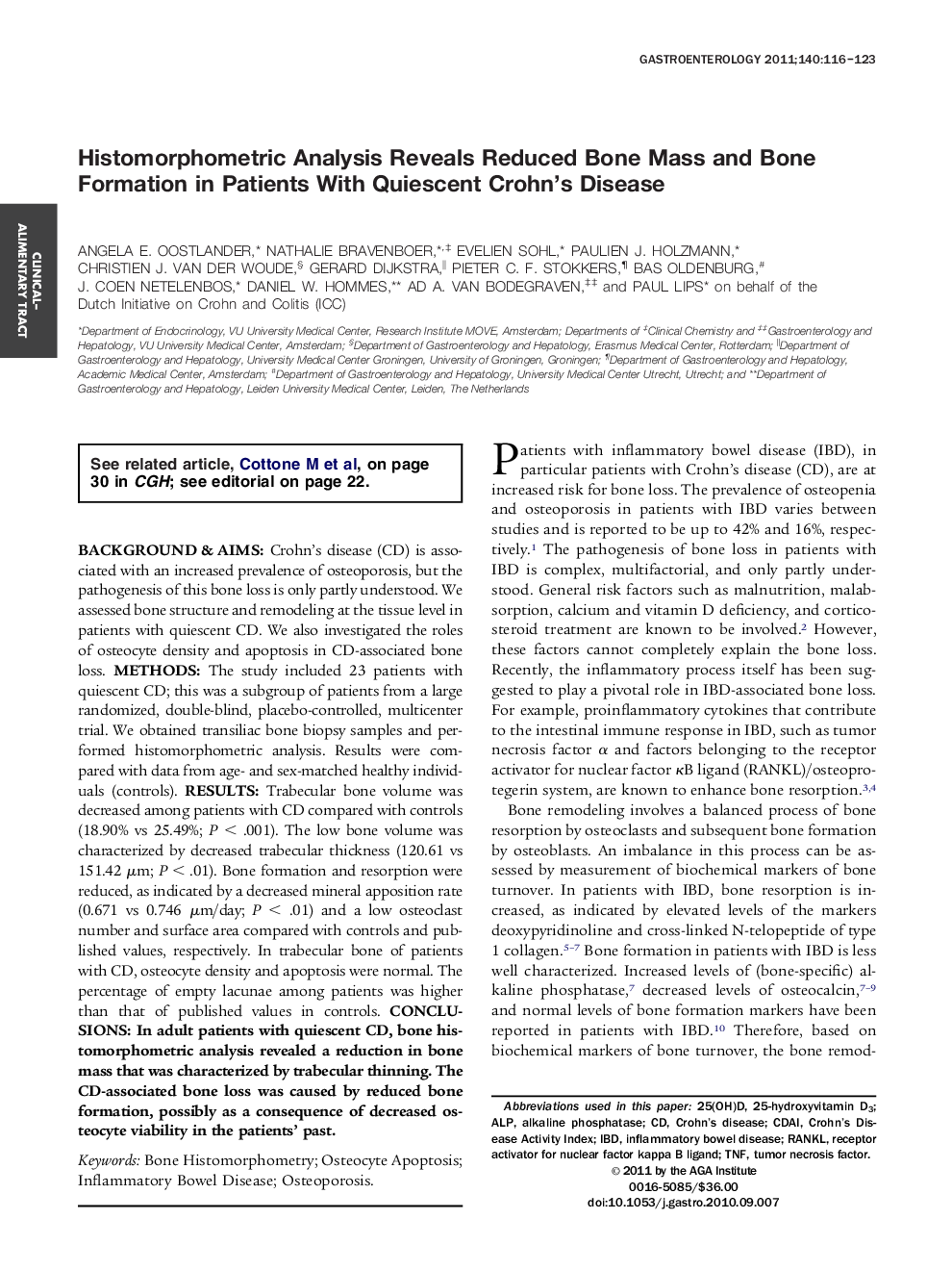| Article ID | Journal | Published Year | Pages | File Type |
|---|---|---|---|---|
| 3295502 | Gastroenterology | 2011 | 8 Pages |
Background & AimsCrohn's disease (CD) is associated with an increased prevalence of osteoporosis, but the pathogenesis of this bone loss is only partly understood. We assessed bone structure and remodeling at the tissue level in patients with quiescent CD. We also investigated the roles of osteocyte density and apoptosis in CD-associated bone loss.MethodsThe study included 23 patients with quiescent CD; this was a subgroup of patients from a large randomized, double-blind, placebo-controlled, multicenter trial. We obtained transiliac bone biopsy samples and performed histomorphometric analysis. Results were compared with data from age- and sex-matched healthy individuals (controls).ResultsTrabecular bone volume was decreased among patients with CD compared with controls (18.90% vs 25.49%; P < .001). The low bone volume was characterized by decreased trabecular thickness (120.61 vs 151.42 μm; P < .01). Bone formation and resorption were reduced, as indicated by a decreased mineral apposition rate (0.671 vs 0.746 μm/day; P < .01) and a low osteoclast number and surface area compared with controls and published values, respectively. In trabecular bone of patients with CD, osteocyte density and apoptosis were normal. The percentage of empty lacunae among patients was higher than that of published values in controls.ConclusionsIn adult patients with quiescent CD, bone histomorphometric analysis revealed a reduction in bone mass that was characterized by trabecular thinning. The CD-associated bone loss was caused by reduced bone formation, possibly as a consequence of decreased osteocyte viability in the patients' past.
